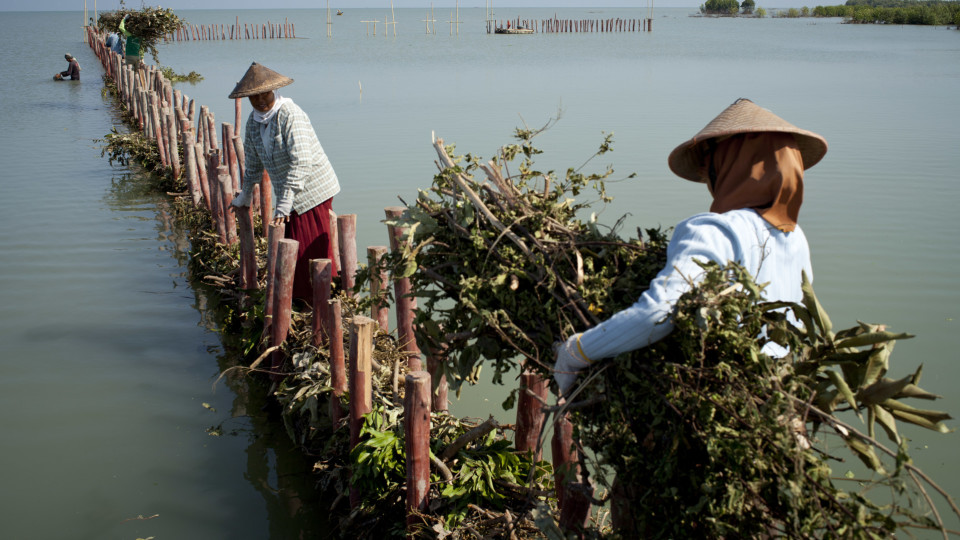
Outsmarting climate change on a budget
-
Coastal resilience
-
Coastal wetland conservation
Low-tech adaptation strategies are helping people in developing countries cope with the dangers of a warmer world.
Developing countries stand to suffer the most from climate change — and they have the fewest resources to prepare for it. So inventors and engineers are devising simple and often inexpensive measures to help communities adapt to a climate-altered world.
This article includes five different innovations, including Building with Nature as Coastal Defenders in Indonesia, which is managed by Wetlands International:
Coastal Defenders:

The mangrove forests along tropical and subtropical coastlines provide myriad benefits: They buffer against waves and wind, inhibit erosion, create habitat for wildlife and fish, and prevent saltwater intrusion into rivers and streams. Yet over the past 50 years, these ecosystems have begun disappearing as mangroves from Thailand to Jamaica are cleared for shrimp farming, logging and urban development.
Having lost the mangroves’ protective buffer, governments are looking for other ways to shore up the coasts. “Hard” engineering solutions such as dykes and seawalls are expensive and become less effective over time. Replenishing mangrove forests is ideal, but it’s no easy task: Young mangroves can’t colonize sediment that’s washing away.
The nonprofit group Wetlands International and Dutch research institute Deltares have created permeable dams to aid in mangrove restoration. The dams’ design mimics the latticed structure of mangrove root systems to reduce erosion and create a stable shoreline for the small trees to repopulate.
Originally published on Discover, by J. Harris.
